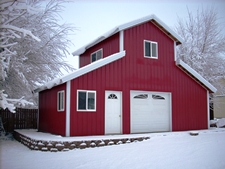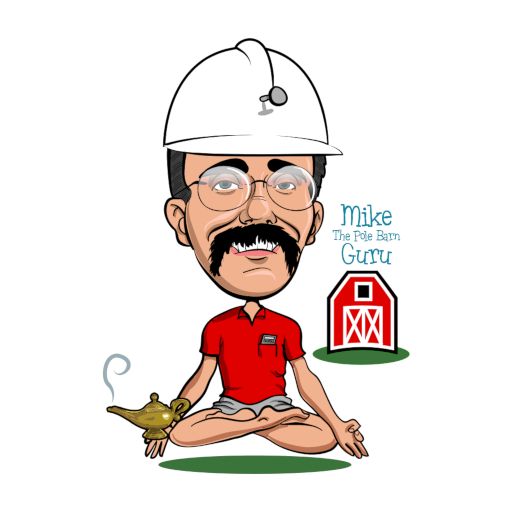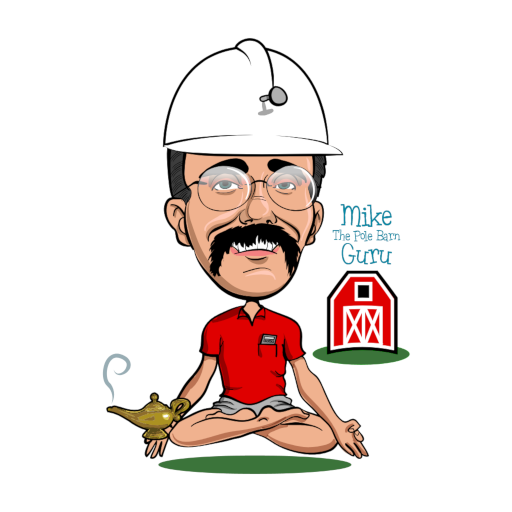 When winter arrives, pole building owners will need more than a tiny space heater and a quilt to keep themselves warm. Sitting on the couch reading a book in thermal pants, a heavy jacket, and snow boots isn’t the most comfortable way to spend the cold months, so we’d like to suggest a few heating options for your pole barn.
When winter arrives, pole building owners will need more than a tiny space heater and a quilt to keep themselves warm. Sitting on the couch reading a book in thermal pants, a heavy jacket, and snow boots isn’t the most comfortable way to spend the cold months, so we’d like to suggest a few heating options for your pole barn.
Electric Floor
Electric floors radiate heat from underneath tiles, laminate, carpet, or engineered flooring. You can install bare wiring or opt for pre-wired mats that simplify the process. Mats are likely to cost more to install, but both systems use only a minimal amount of electricity.
Radiant Ceiling
Radiant ceiling tiles are long tiles on the ceiling, usually placed in increments, that generate and radiate heat. They are useful for targeting heat only in certain areas, such as in a living area above the couch or a bathroom next to the shower.
Radiant ceiling tiles, unlike electric floors, sit outside of the ceiling, not the inside. Some models are designed for painting and most will accept add-ons such as exhaust fans and lights.
Cove Heater

Cove heaters are silent-operating radiant panels mounted near the ceiling. They are a great option for heating safely with kids or keeping your heating equipment out of sight. Pole barn owners opt for these when baseboard heaters are difficult to install because of safety hazards or obstructive furniture.
Duct Fan
If you have a central heating system, you can add a simple fan to your ducts to increase the flow of warm air throughout your pole barn. Since there is so much empty space inside pole buildings, duct booster fans can help spread your heat evenly and might even help you save on your electric bill.
Mount your fan near the outlet end of a heating duct. The pressure switch will sense air pressure from the forced air coming out of the furnace and switch the fan on when it needs to be on. Higher quality fans emit less noise, but prices can range quite a bit.
Room-to-Room Ventilation
If your pole building has quite a few separate rooms to heat, you can circumvent your insulation and install a room-to-room ventilation system. These systems, installed as ducts in the wall, take warm air from room A through a low vent in the wall and push it up through a high vent in room B. Ventilators help draw the air through space between studs and distribute the warm air evenly into the adjoining room.
Ceiling Fan Heater

Ceiling fan heaters distribute air in the same way an ordinary fan does, but a heating element also provides the spinning blades with additional warm air to push throughout the room. Pole barn owners can turn the heating element off during the spring and summer to allow the ceiling fan to function like a normal fan.
Final Words: Stay Safe
You may have to deal with some unusual problems when battling winter weather. Remember the following:
- Condensation Build-Up – Burning propane, methane, or kerosene can produce moisture in the air that, when it drops below the dew point, will cause water to condense inside your pole barn. Rapid changes in temperature can also pull moisture from the air and turn it to liquid. Use desiccators and dehumidifiers to control moisture in your pole building before it causes damage.
- Ventilation – It’s tempting to trap all the warm air inside your pole building, but you have to let the air flow freely from inside to out and vice-versa. Proper ventilation keeps air fresh, oxygen-rich, and helps prevent heating-related disasters.
All heating creates some kind of fire hazard in your home. Be sure to operate all equipment according to instructions and prepare your pole barn heating system to resist fire by keeping it clean and having it inspected regularly.







Passive solar heating for a south facing porch,insulated floors and footings, and a whole home distributed ventilation system are features i want in my two story pole home. Can you direct me to some web sites or persons that have designed Pole Homes in this way. I would like to know the pros and cons of using 26 gauge roofing steel. Here in eastern Colorado hail and high winds are the weather issues for our roofs.
Thank You
I would recommend investing in an architect for the “concept” and let him work with one of our Building Designers on the structural part of it. This is what we do every day 🙂
29 gauge will probably do everything you will ever need it to do. High quality steel roofing rarely gets hail damaged and the roofing and siding are not the structural weak links in the system. If you are concerned about design wind speeds, it would be more practical to design the entire structure to withstand a great wind speed, than to arbitrarily just make the steel marginally thicker.